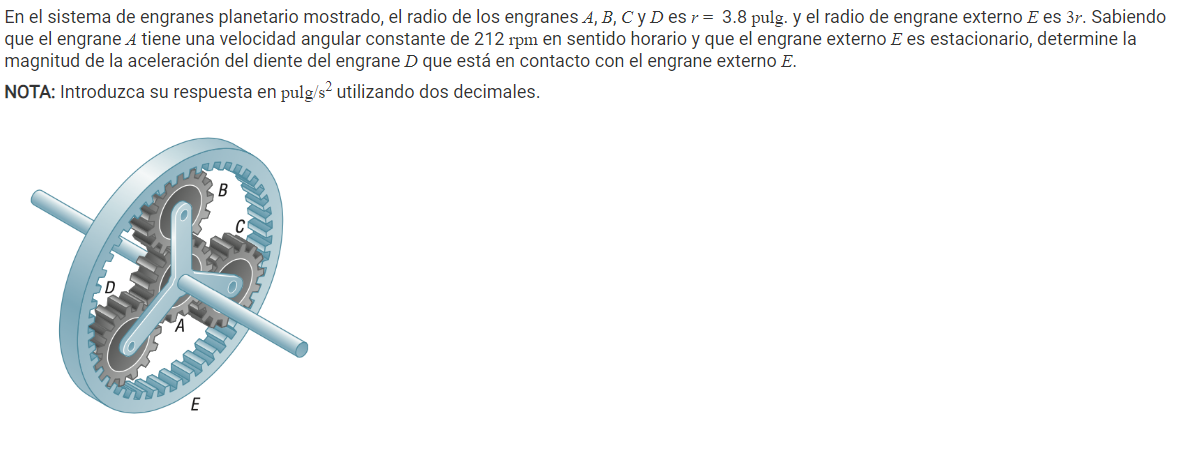¡Tu solución está lista!
Nuestra ayuda de expertos desglosó tu problema en una solución confiable y fácil de entender.
Mira la respuestaMira la respuesta done loadingPregunta: In the planetary gear system shown, the radius of gears A, B, C, and D is r = 3.8 in. and the external gear radius E is 3r. Knowing that gear A has a constant angular velocity of 212 rpm clockwise and that external gear E is stationary, determine the magnitude of the acceleration of the tooth of gear D that is in contact with external gear E. NOTE: Enter
In the planetary gear system shown, the radius of gears A, B, C, and D is r = 3.8 in. and the external gear radius E is 3r. Knowing that gear A has a constant angular velocity of 212 rpm clockwise and that external gear E is stationary, determine the magnitude of the acceleration of the tooth of gear D that is in contact with external gear E.
NOTE: Enter your answer in in/s2 using two decimal places.
- Hay 2 pasos para resolver este problema.SoluciónPaso 1Mira la respuesta completa
Given data:
the radius of gears A, B, C, and D is r = 3.8 in.
Paso 2 DesbloqueaRespuestaDesbloquea
DesbloqueaRespuestaDesbloquea
Texto de la transcripción de la imagen:
En el sistema de engranes planetario mostrado, el radio de los engranes A, B, C y D es r = 3.8 pulg. y el radio de engrane externo E es 3r. Sabiendo que el engrane 4 tiene una velocidad angular constante de 212 rpm en sentido horario y que el engrane externo E es estacionario, determine la magnitud de la aceleración del diente del engrane D que está en contacto con el engrane externo E. NOTA: Introduzca su respuesta en pulg/s² utilizando dos decimales. B E

Estudia mejor, ¡ahora en español!
Entiende todos los problemas con explicaciones al instante y pasos fáciles de aprender de la mano de expertos reales.
